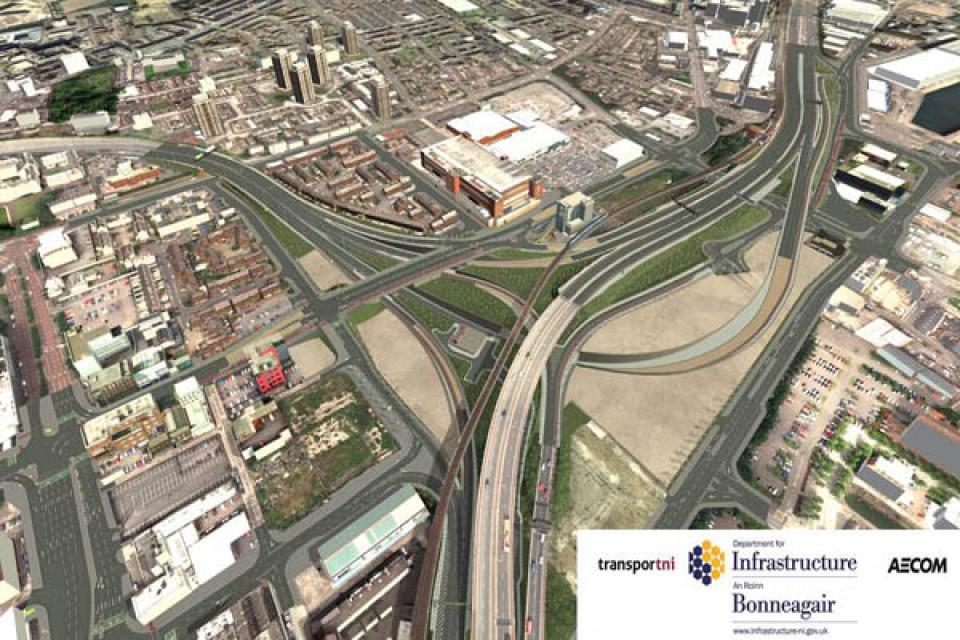FREQUENTLY ASKED QUESTIONS ON GREENWAYS
The same questions always crop up about the Northern Ireland Greenways project and greenways in general, so here’s a helpful list of the most common ones – and do please get in touch if you have a specific query.
- What is a greenway?
- Why only Northern Ireland Greenways?
- Who is leading on greenway development in NI?
- Who owns the track beds of the former railways?
- Does that line on your map mean a greenway is going to be built there?
- What if landowners don’t want a greenway?
- Why spend money on greenways instead of health, education etc?
- Don’t greenways cause problems between cyclists, pedestrians and dog walkers?
- Do greenways create anti-social behaviour problems?
WHAT IS A GREENWAY?
REPLACE TEXT
WHY ONLY NORTHERN IRELAND GREENWAYS?
All of the former railways and canals which this project draws upon were built in a time before borders on the island of Ireland. The future of greenway development will similarly be to create physical links and routes for which borders are irrelevant.
However, in terms of creating a project which aims to influence public policy, Northern Ireland Greenways is aimed at the Northern Ireland Assembly and Executive and the local councils.
Those bodies tasked with leading development of cross-border projects work closely with their colleagues in Cavan, Donegal, Leitrim, Louth and Monaghan County Councils, the Department of Transport, Tourism And Sport while Northern Ireland Greenways participates with Cyclist.ie – The Irish Cycling Advocacy Network, which brings together greenway and active travel campaigners from across the island.
WHO IS LEADING ON GREENWAY DEVELOPMENT?
Northern Ireland Greenways is an awareness campaign – we help to set the vision, but we’re not greenway builders.
In Northern Ireland, the current model is for the Department for Infrastructure to lead on developing policy (eg the Greenway Strategy 2016) on behalf of the Northern Ireland Executive, and liaise with other government departments with a stake in greenway development and outcomes eg Department of Health, Department of the Economy (Tourism), Department for Communities and so on.
Delivery of greenway projects from community engagement though feasibility studies and business plans to contracting for construction will be taken on by the 11 local councils.
Some special projects may be driven by local community organisations eg the Connswater Community Greenway was driven by the East Belfast Partnership.
WHO OWNS THE FORMER RAILWAY LINES?
REPLACE TEXT
DOES THAT LINE ON YOUR MAP MEAN A GREENWAY WILL GO THERE?
The maps on this site are primarily to document the footprint of the former railway lines and canals in Northern Ireland. Where greenway project ideas are not based around former transport routes, suggested lines or areas have been added for clarity.
In terms of creating greenways on former transport routes, there are obvious challenges – not least the inescapable fact that 99% of former railway lines are held in private ownership. With the passing of time and the needs of landowners, a significant proportion of the routes have been lost to agricultural clearance or building developments. Bridges have crumbled or been removed, cuttings filled in and embankments have deteriorated. A good rule of thumb (from studies on satellite imagery) is that around 50% of the former trackbed alignments remain untouched, and 50% have some form of development.
This means diversions will need to be sought in many locations, to avoid housing or farm buildings, or to meet the needs of landowners.
WHAT IF LANDOWNERS DON’T WANT A GREENWAY?
The Northern Ireland Greenways project is about sharing ideas to create new traffic-free routes across the country to invest in our future. It’s not about imposing a vision or will on anyone who doesn’t share it.
Councils are leading on the development of greenway projects because they can begin a process of engagement with landowners on potential route corridors.
DO GREENWAYS CAUSE PROBLEMS BETWEEN USERS?
Greenways in themselves do not create problems, more so than any limited space with multiple users can lead to conflicts. Greenways by their nature are spaces which are shared by people doing different things at different speeds.
Everyone using a greenway should be respectful of others and look out for each other.
Projects such as One Path by Sustrans can help to educate users on problems which can arise, and ensuring appropriate widths in areas of expected high usage can design out issues before they start.
DO GREENWAYS CREATE ANTI-SOCIAL BEHAVIOUR?
No.
WHY NOT SPEND MONEY ON HEALTH, EDUCATION, POTHOLES ETC?
The Department for Infrastructure estimates the full 1,000km greenway network in Northern Ireland will cost £150m. That seems like a lot of money in these austere times. But let’s put it into some perspective.
That’s less than the cost of the York Street Interchange project, which is about 500m long from each end to end.
That £150m will be spread over 25 years, meaning an average investment of just £6m per year.
Health spending each year in Northern Ireland is £5bn. That’s £5,000 million, or to put it another way, greenway development represents 1/1,000th of health spending.
Government expenditure is generally split two ways – resource (spending to maintain things and provide services) and capital (investing in building new things) – and the two are kept separate. Greenway development at this stage will be mostly capital investment. Health spending is primarily resource, as is Education and road maintenance – capital expenditure on greenways doesn’t reduce those pots of cash.
On the flip side, greenways have been shown to have excellent short and long term payback to the economy. The 42km Great Western Greenway in Mayo was built for €5.7m and in its first full year was estimated to have contributed €7.2m in spend in the local economy. In terms of local job opportunities, tourism spending and long-term health and well-being effects on the local population and, by extension, an easing of the burden on the health budget, greenways are an amazing investment.
